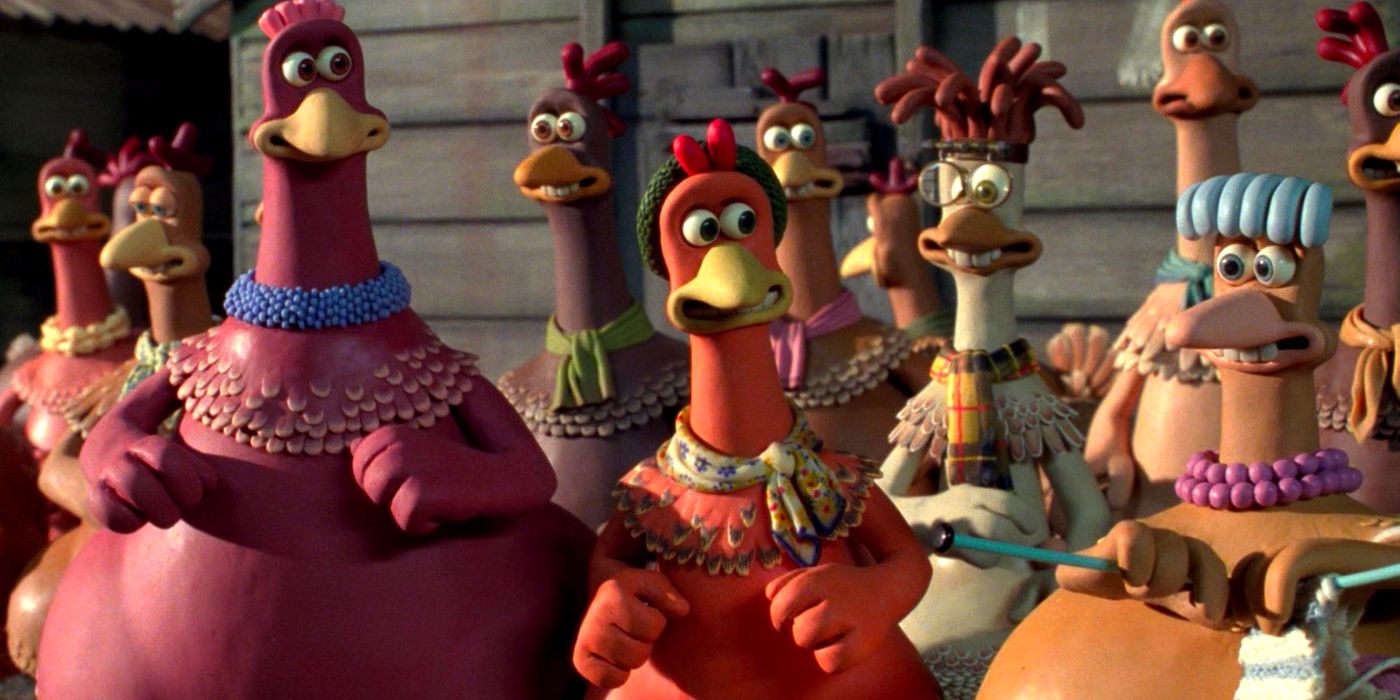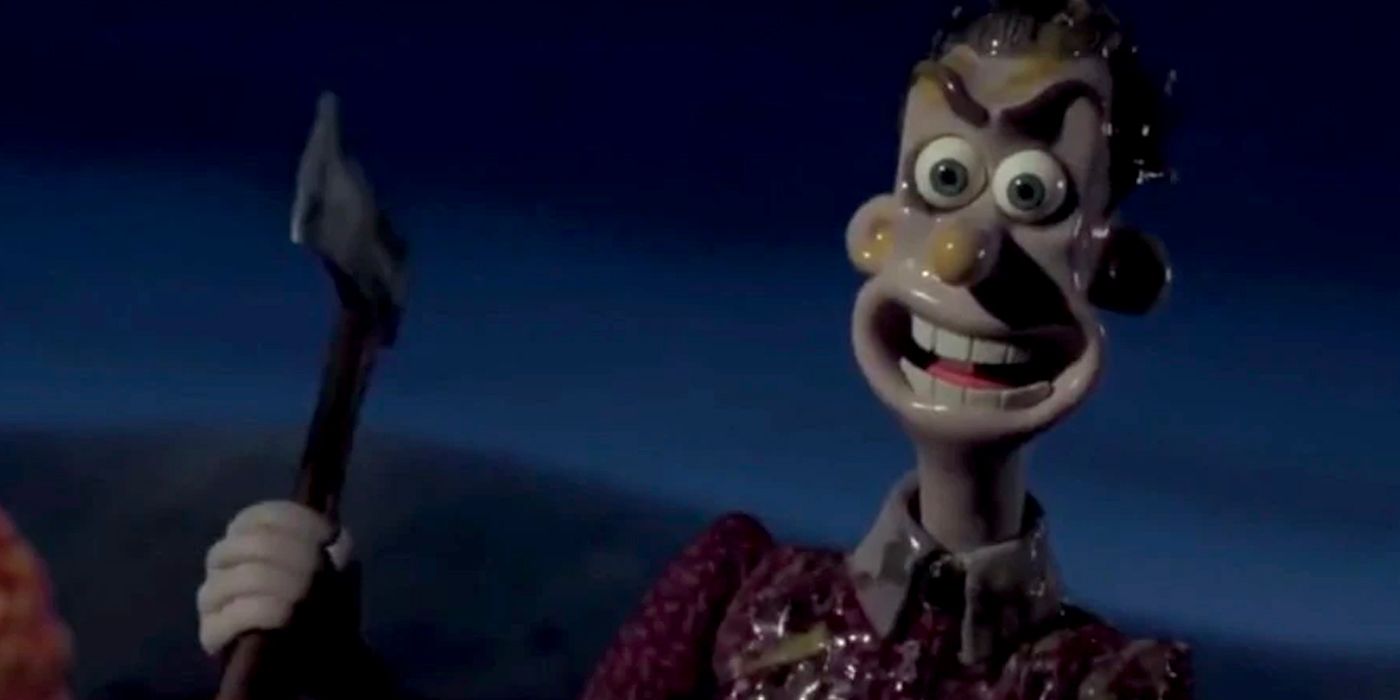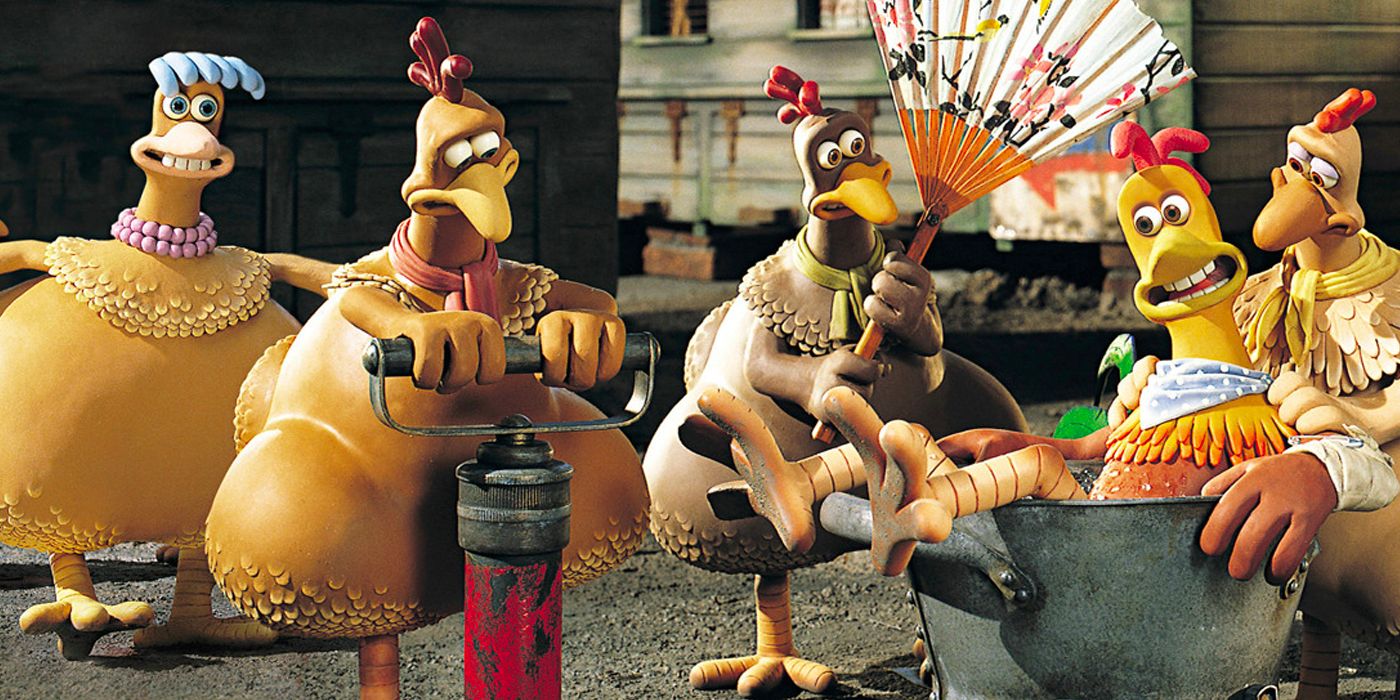Aardman Animations’ critically acclaimed movie Chicken Run (2000) is an animated classic, popular with adults and children alike. Now over 20 years old, it remains the highest grossing animated movie of all time, a testament to its gripping and emotive action-driven story, and memorable characters. Chicken Run is a prisoner-of-war style escape movie, starring Claymation chickens, who defy their profit-hungry owners, Mr. and Mrs. Tweedy. With the infallible Ginger at the helm (voiced by Julia Sawalha), the chickens strive to evade Mrs. Tweedy’s attempts to turn a profit with her mechanized chicken pie machine, with an ultimate escape into an egalitarian utopia.
While the movie is entertaining for all the family with moments of light humor and engaging action sequences, it is arguably the spirit of revolution which drives the film. Chicken Run forms an acute political allegory, which takes the form of an anti-capitalist stance against private ownership of the means of production, and the exploitation of workers for profit.
Mrs. Tweedy Is the Epitome of Capitalist Greed
Mrs Tweedy (voiced by Miranda Richardson) is the story's memorable villain, where she covets ever-greater returns from her chicken farm, and denies her husband's assertions that the chickens are “organized.” As a profit-hungry boss who does not value her workforce, Mrs. Tweedy refuses to believe that the chickens are intelligent, until it is too late. Her plans for greater riches are motivated by a well-placed magazine for chicken-farmers, where the title reads “Tired of Making Miniscule Profits?” The publication ominously suggests that farmers should upgrade to mechanized production and turn their egg-laying workers into pies. Allegorically speaking, this sinister plot represents a capitalist exploitation of the worker’s body for profit. Later, a roadside billboard for Mrs. Tweedy’s Chicken Pies features a pie with a chicken’s head bursting through the crust, affirming this dark association between the worker and the product.
Mr. Tweedy’s refrain that the chickens are “organized” fails to resonate with his wife, until the escape nears its climax, and his plea becomes a dramatic pronouncement that “the chickens are revolting!” Ultimately, it is Mrs. Tweedy’s ability to underestimate the power of collective action that allows Ginger’s escape plan to succeed.
The chickens long for a new home where their lives are not dependent on their ability to produce eggs. Early in the movie, it is established that those chickens who fall behind on their egg quota will literally get the chop. And when Mrs. Tweedy’s sinister pie-machine is unveiled, the necessity of escape takes on a new urgency. The arrival of an on-the-run circus rooster named Rocky (voiced by Mel Gibson) fuels their hopes of learning to fly, facilitating a bid for freedom. But Rocky himself is a victim of capitalistic false advertising – he can only fly if he is ejected from the circus’ cannon. Ultimately it is the collective action of the chickens that allows the coop to build an escape plane, using their crafting skills as the basis for their materials. Babs (voiced by Jane Horrocks) and her continual knitting is a running joke throughout the movie, but her labor becomes a vital element of the final escape is a representation of female empowerment. This becomes a testament to the importance of all labor when directed towards a collective goal – one that is not solely tied to profit.
Ginger Takes the Lead to Champion Collective Action
Ginger’s escape plan is in opposition to the individualistic greed exhibited by Mrs. Tweedy. Ginger confirms to Rocky that one or two chickens could potentially escape with relative ease, but that this is simply not an option. The coop is a collective, and the escape plan necessarily allows every chicken to be free. No chicken is to be left behind. Ginger strains to explain to her fellow chickens that there really exists a place with no fences and no farmers, where they would be responsible for their own survival. The ultimate utopia she strives for is defined by freedom, and an escape from ownership: “We’ll either die free chickens or we die trying” is her mantra. The final scenes of the movie depict a cathartic escape to a secluded green space, protected by signage that reads “Bird Sanctuary Keep Out,” where “Chickin” is scrawled over the word “Bird.” Ginger and Rocky’s offspring of chicks is shown at the close, an impossibility on the farm where all eggs were harvested unfertilized, suggestive of a new life free from human intervention in the natural life cycle.
Most animated movies contain content for adults, where filmmakers appreciate that their work is often viewed by an accompanying grown-up. This justifies the inclusion of both adult humor and political commentary, which would be largely overlooked by a younger audience. In Chicken Run, the characterization of Rocky as an attractive masculine circus-star inspires a series of tongue-in-cheek witticisms, where the rooster frequently refers to his counterparts as “chicks” in the humanized sense. But the film blends humor with sincerity throughout. Its tangible prisoner-of-war setting adds a layer of darkness to the family film, with visual cues suggestive of a World War II concentration camp. This is one of many hidden depths to Chicken Run, which invites its mature audience to read into subtextual subtleties.
Such complexity in movies primarily aimed at children allows for a representation of political allegory that would feel too overt or preachy in a non-animated film for adults. The exploration of ownership, exploitative labor, and a collective desire for freedom creates a highly engaging and successful animated film, which has the genius to appeal to all ages. Chicken Run’s success has long inspired talk of a sequel, and it is confirmed that Chicken Run 2: Dawn of the Nugget will premiere on Netflix in 2023. Current plot announcements describe a return to the mainland for the cast as they attempt to battle a new threat facing “all of chicken-kind,” with the tagline, “this time, they’re breaking in!” Ginger’s devotion to helping all chickens as a collective is clearly still her priority in the sequel, favoring the group over the individual.
It is a defiant spirit of revolution and collective action that drives Chicken Run, through a clever combination of sincerity and lightness. Ultimately this skillful handling of political allegory elevates a farmyard Claymation adventure into an animated masterpiece.



